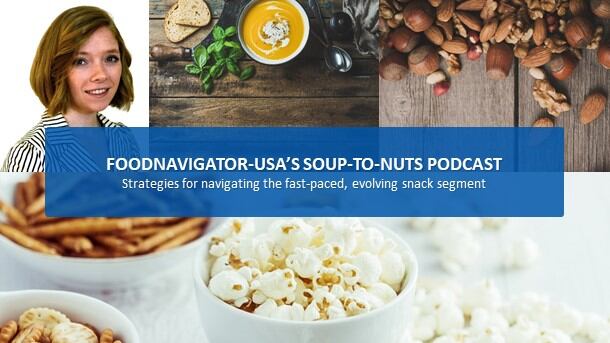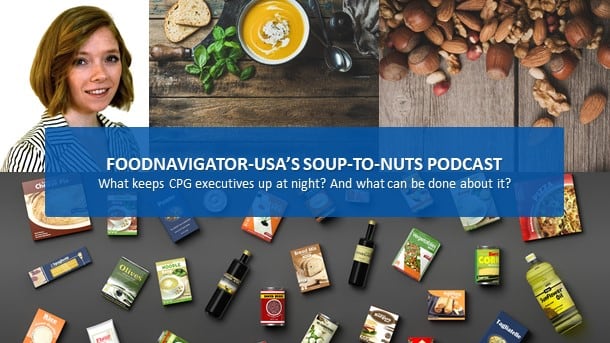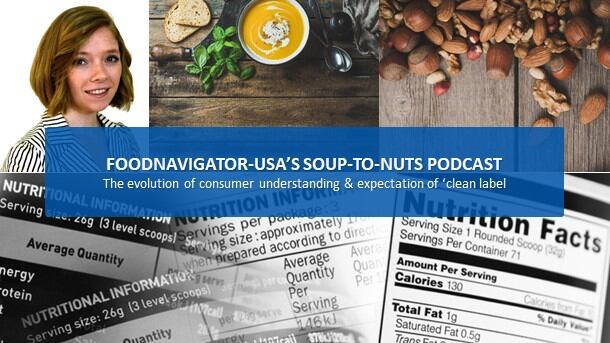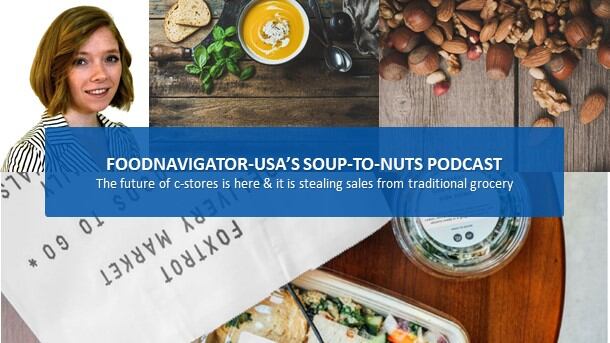Much of this growth is fueled by a demand for convenience as time-crunched shoppers look to replace meals with on-the-go snacks, which means as hungry for snacks as consumers are, they won’t settle for just anything. Rather, they increasingly want products that are better-for-them and that offer functional benefits. They also want a wide variety that can easily snap into any day part and fulfill any craving.
To meet this need, hundreds of new snacks launch every year – but not all of them make the cut, as illustrated by the grim statistic that about 80% of new CPGs fail within the first year.
To find out what it takes to make it long-term in the competitive snacking segment, as well as what consumers want from the space, this episode of FoodNavigator-USA’s Soup-To-Nuts podcast features industry veteran Craig Lieberman, who founded the better-for-you cracker brand 34 Degrees in 2003. Drawing on his more than 15 years of experience making entertainment Crisps, and more recently snackable Sweet Crisps and savory Snaps, Lieberman reflects on how the snack segment has evolved over the past 10 years and predicts where it is heading. He also shares hard-learned lessons about how to balance flavor and health, what it takes turn a concept into a viable and lasting product, how to evaluate potential business partners and the benefits of a collaborative environment and leadership style.
[Editor’s note: Never miss another episode of FoodNavigator-USA’s Soup-To-Nuts podcast – subscribe on iTunes.]
The evolution of snacking
When Lieberman first launched 34 Degrees in 2003, snacking was in the background – a style of eating that some people indulged in occasionally and often mindlessly. As such, taste, quality and health all took a backseat with the average consumer simply not caring as much as they do today.
But Lieberman cared. He wanted his unique wafer thin crisps that originated in Australia to be made from only a handful of premium quality, simple ingredients that would elevate – rather than compete with – their cheese or dip pairing. These values eventually helped 34 Degrees ride the swelling wave of snacking and making the transition from just “entertaining.”
“Ten years ago when I started, I would say snacks were a much more mindless activity, and I think today they are much more mindful and … it’s part of our everyday existence now,” Lieberman said. As such, he added, “consumers want better-for-you options in snacking,” which has led to “every type of grain and bean and seed imaginable being used to create better-for-you snacks that still taste delicious.”
Lieberman emphasized this last point as essential for brands launching new products. Consumers today want it all – they don’t want to sacrifice taste for health, nor do they want to forego health for a flavorful, enjoyable snacking experience. Unfortunately, for years, these values seemed at odds in the snack category and only recently have innovative manufacturers, like 34 Degrees, demonstrated how these priorities can complement each other – rather than just conflict with each other.
Lieberman explains that he has approached this dilemma with a great deal of patience.
“We start with flavor … if something doesn’t taste great, we’re not going to bring it out to market” even if it is healthy or has great functional attributes, he said. And while he acknowledged that finding ingredients that can deliver all three attributes can be time intensive and frustrating, he said, “it’s worth the wait, rather than rushing out products that might deliver on one but not the other, because I think that’s when consumers tend to not stick with you.”
Lieberman’s patience brought him to the chickpea as an ingredient that fulfilled all of these needs. As such, he used it to create and launch late last year a high-quality gluten-free crisp, the success of which speaks to two other dominate trends in snacking that brands cannot ignore if they want to survive: plant-based products that also fit personalized diets.
“Our number one request from consumers is why don’t you have a gluten-free option for your crackers? And it’s no that we weren’t trying. We tried dozens and dozens of different grains and flours over the years,” but most of them compromised either taste, texture or experience, he said. The chickpea, however, “delivers the same experience as the rest of our line … and we’re hearing they like the flavor as much, if not more than the rest of our line. And that’s a difficult to achieve.”
Lieberman also notes that the evolution of gluten-free – and other specialty diets – provides a roadmap for what is now happening more broadly in snacking.
“The history of gluten-free definitely lends itself to what’s going on with snacking in a lot of ways. There’s a great sort of comparison between the two. When 10 years ago there was consumer excitement just to have gluten-free options and I think one could argue that a lot of those options 10 years ago didn’t taste particularly great, but consumers expect a lot more from gluten-free today. There’s been a lot more innovation in the category and the expectation that consumers’ have is much higher than it used to be. And, I would argue that the same thing is happening in snacking,” he explained.
Building on the success of the gluten-free crisp, 34 Degrees next launched a quartet of Sweet Crisps, that took the brand further into the snacking space. During this launch, Lieberman discovered the role packaging is playing in the snack space – attributing part of the success of the Sweet Crisps to their resealable bags that allowed for easy access but also facilitated self-control.
Next week at Natural Products Expo West, 34 Degrees will further expand its snack portfolio with the launch of its savory baked Snaps, which once again use chickpea as a base.
Success requires more than an on-trend product
Given the high failure rate of CPG launches, it is safe to say that having an on-trend – and even great tasting – product often is not enough to guarantee long-term success. Lieberman says 34 Degrees succeeds in part because it takes a narrow – not wide – approach, and because he carefully selects strategic partners that can magnify the brand’s impact.
“The approach we’re taking this time is to really work very closely with some significant strategic partners, and take a more methodical, strategic approach to launching our snacking line and really test and learn,” he explained.
He added that because “nothing is ever perfect when you first launch,” it is essential that a brand has open lines of communication with partners and retailers so that shortcomings or missteps are identified and corrected quickly.
He also encouraged brands to carefully vet potential partners across every aspect of their business, including operational, sales and marketing because all of those aspects play into success. And, he said, if something is off or doesn’t click then it is better to walk away, rather than investing excessive resources and not seeing results of equal values.
Another core component to 34 Degrees’ long-term success is the collaborative environment that Lieberman has helped create by getting in the trenches to work alongside employees but also giving them space to do their jobs.
And finally, Lieberman says that for brands to succeed continually they must never take a win for granted, but rather continually reinvent and improve themselves and their products.




